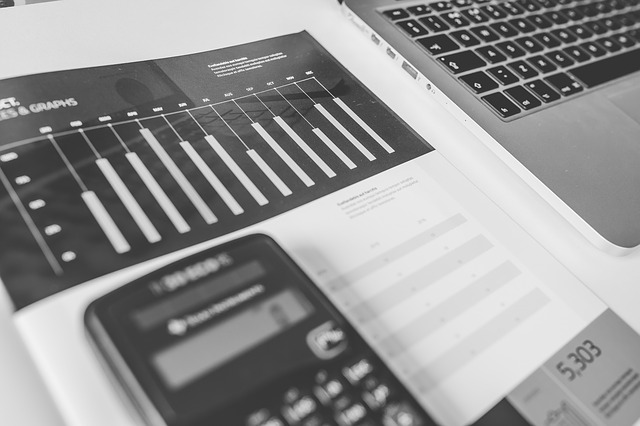The
General Accounting Plan for SMEs
is the procedure designed to homogenize the accounting information of companies to adapt and comply with various European regulations. Take note of its main features and requirements.
What is the General Accounting Plan for SMEs?
The General Accounting Plan refers to the legal document that regulates the accounting regulations that Spanish SMEs must apply, according to a series of guidelines set by the European Union.
Approved in Royal Decree 1514/2007 of November 16, its main objective is to combine all the economic and financial information of a company or corporation in order to achieve uniformity when applying the different accounting systems.
Later, the Government approved, in accordance with the First Final Provision of Law 16/2007 of July 4, the General Accounting Plan for SMEs.
This reform arose as a measure for small and medium-sized enterprises to have a specific accounting plan, and whose structure is very similar to that of the General Accounting Plan.
Differences between the General Accounting Plan and the General Accounting Plan for SMEs

The main difference between the two plans is that the General Accounting Plan must be applied by any type of company,regardless of its legal, individual or corporate form.
On the other hand, the General Accounting Plan for SMEs may be applied by those small and medium-sized companies that, for two consecutive years, meet at least the following requirements detailed below.
Requirements to comply with the new General Accounting Plan for SMEs
- The total of the items corresponding to the asset must exceed 4 million euros.
- The net amount of the annual turnover must be less than EUR 8 million.
- The maximum number of workers employed during the financial year may not exceed 50.
SMEs that for two consecutive years have not met at least two of these requirements, will lose the possibility of benefiting from the application of the Accounting Plan for Small and Medium Enterprises.
If a small or medium-sized company, at the beginning of the first financial year, does not apply the General Accounting Plan for SMEs, the General Accounting Plan will be applied automatically and retroactively, having to register the corresponding assets and liabilities.
However, the Accounting Plan for Small and Medium-sized Enterprises may not be applied by those SMEs that, although complying with two of these requirements, are in the following situation:
- Have securities admitted to trading on a regulated market of any Member State of the European Union (EU).
- Be part of a group of companies that formulate the annual accounts on a consolidated basis.
- Have a functional currency different from the Euro.
- Financial institutions with specific provisions on accounting matters.
In the General Accounting Plan for SMEs, the annual accounts of small and medium-sized enterprises must contain the balance sheet, the profit and loss account and the report.
Structure of the General Accounting Plan for SMEs

The General Accounting Plan for SMEs is structured in a total of 5 parts that explain how it should be prepared, as well as the main differences that differ from the General Accounting Plan:
1. Conceptual Framework of Accounting
It includes those documents that fully integrate the annual accounts of an SME: balance sheet, profit and loss account, statement of changes in net worth and memory.
2. Registration and Valuation Standards for Small and Medium-sized Enterprises
Here are the accounting principles that SMEs must apply. If any of the operations carried out were not included in this document, the SME would have to refer to the registration rules contained in the General Accounting Plan.
3. Annual Accounts
The annual accounts reflect those results obtained by the SME,the way in which they have been obtained, and the situation in which a company finds itself at the end of the year.
Here is the way in which the annual accounts must be drafted according to the Commercial Code, the Consolidated Text of the Law of Corporations, the Law of Limited Liability Companies and the General Accounting Plan of SMEs.
Within the annual accounts, the following shall be reflected:
- The assets ⇒ Assets and rights controlled by the company and from which a future profit is expected.
- Liabilities ⇒ Current Obligations.
- Net
worth
⇒ Resulting from the difference between assets and liabilities. - Revenues ⇒ Increases in the company’s equity during the year.
- The expenses ⇒ Reductions in the company’s assets during the year.
The information contained in these annual accounts must be relevant and reliable and pursue the objective that the accounts are a true reflection of the real economic situation of the company. In this way, decisions can be made with guarantees.
The annual accounts must be made once every twelve months, and their values must be presented in euros.
4. Table of Accounts

The fourth part includes the groups, subgroups and accounts necessary to be able to prepare the table of accounts in which the operations contained are reflected:
- Group 1: Core Funding
- Group 2: Fixed assets
- Group 3: Stocks
- Group 4: Creditors and debtors
- Group 5: Financial accounts
- Group 6: Purchases and expenses
- Group 7: Sales and Revenue
- Group 8: Equity Expenses
- Group 9: Net Worth Income
5. Definitions and Accounting Relationships
It includes those definitions and accounting relationships of the groups, subgroups and accounts that will be included in the table of accounts.
Accounting relationships are responsible for defining the most common reasons for charge and payment of accounts, without exhausting all the possibilities they issue.
If you want to know in detail the latest news andchanges, review the information collected on the General Accounting Plan for SMEs in the BOE
and perform an analysis aboutwhether it is beneficial to be able to benefit from it or, on the contrary, it does not mean any profit.
conclusion
In general, what is intended with this adaptation of the
General Accounting Plan
to SMEs is to make the accounts of a small company easier and less expensive.
It understands that small and medium-sized enterprises, given their smaller number of workers, have fewer resources allocated to accounting tasks; and, in addition, generally, they will have fewer movements that affect their assets or accounts than a large company, in which transactions with fixed assets are more common.
If after this post you have doubts about the General Accounting Plan and you want us to help you, remember that you have an experienced team of accounting advisors near you to solve all your queries.








